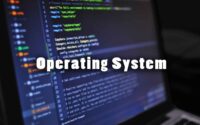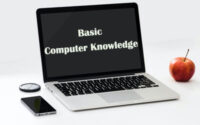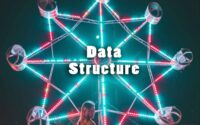Computer Networks Objective Questions and Answers Paper
The Free download links of Computer Networks Objective Questions and Answers Papers enclosed below. Candidates who are going to start their preparation for the Computer Networks Objective papers can use these links. Download the Computer Networks Objective Papers PDF along with the Answers. Computer Networks Objective Papers are updated here. A vast number of applicants are browsing on the Internet for the Computer Networks Objective Question Papers & Syllabus. For those candidates, here we are providing the links for Computer Networks Objective Papers. Improve your knowledge by referring the Computer Networks Objective Question papers.

Objective Questions and Answers on Computer Networking
1. A 6-MHz channel is used by a digital signalling system utilizing 4-level signals, what is the maximum passible transmission rate ?
(a) 1.5 M baud/sec
(b) 12 M baud/sec
(c) 6 M baud/sec
(d) 24 M baud/sec
2. Choose the net work operating system that does not support symmetric Multiprocessing (SMP)
(a) Banyan (VINES)
(b) SCO Unix
(c) Microsoft windows NT Advanced server
(d) Novell Netware 3X
3. In client/server systems, the important measure of the performance of the server system is
(a) Million instructions per second (MIPS)
(b) Clock speed (MHz)
(c) Transaction per sections (IPS)
(d) Pixels per second
4. Applications servers are
(a) Network management software
(b) Integrated Development platforms
(c) Multiprocessor systems with typically 4GB disks, 128 kB RAM, multiple hard disks CD ROM and network cards
(d) Systems used to on-line services for uploading applications and shareware.
5. What is going on-line ?
(a) Buying a MODEM and connecting it to your computer
(b) Getting a PTI or REUTERS news wire connection
(c) Connecting your computer to a LAN
(d) Getting access to the various commercial and other information services over the dial-up lines or 1-Net connection.
6. Demodulation is the process of
(a) converting digital signals to analogue signals
(b) converting analogue signals to digital signals
(c) combining many low speed channels into one high speed channel
(d) dividing the high-speed signals into frequency bands
7. A T-switch is used to
(a) control how massage are passed between computers
(b) echo every character that is received
(c) transmit characters one at a time
(d) rearrange the connections between computing equipment
8. Internet is a
(a) network run by the Government
(b) a network run by the united nations organisation
(c) a loose network not owned by any body but used by all universities and governments around the globe
(d) a commercial in formation service run by ziff davis co, in us.
9. In computer network, which of the following applications are becoming very popular
(a) Hierarchical very applications
(b) Centralized applications
(c) Client/server applications
(d) Stand-alone applications
10. Many low-speed channels are interwoven into one high-speed transmission by a
(a) Time-division multiplexer
(b) Frequency division multiplexer
(c) Both (a) and (b) above
(d) None of the above
11. To connect a computer with a device in the same room. You might be likely to use
(a) A coaxial cable
(b) A ground station
(c) A dedicated line
(d) All of the above
12. What was the first network that was made available.
(a) DECNET 1980
(b) Novell Netware
(c) IBMm Token Ring 1985
(d) IBM PC Network 1984
13. The slowest transmission speeds are those of
(a) Twisted pair wire
(b) Fiber-optic cable
(c) Coaxial
(d) Microwaves
14. With telecommunications and a personal computer you can
(a) “Download” free public domain programe
(b) Send letters to be painted and delivered by the post office
(c) Order goods at a substantial discount
(d) All of the above
15. What is the name of the network architecture that was developed by IBM?
(a) SNA
(b) XNS
(c) DECNET
(d) Novell
16. Which organization draws up standards for modems ?
(a) CCITT
(b) BELL
(c) AT & T
(d) Hayes
17. This will provide end-to-end digital connection for all voice (digitized), data, telemetry, jacrimile and video applications.
(a) PST
(b) SNA
(c) ISDN
(d) CCIIT
18. Compared to analog signals, digital signals
(a) allow faster transmission
(b) are more accurate
(c) both (a) and (b)
(d) none of the above
19. Auto dialling allows
(a) you to dial up phone numbers by typing them on the keyboard
(b) a personal computer to answer incoming calls without human assistance
(c) both (a) and (b) above
(d) none of the above.
20. Choose the standards for packet switched communication ?
(a) CCITT X.25 and X.75
(b) ARCNET
(c) Open systems interconnection
(d) CCITT F.200
| Practice Question | Objective Papers |
| Quiz | Important Papers |
| Mock Tests | Previous Papers |
| Typical Question | Sample Question |
| MCQs | Model Papers |
21. Which one of the following is not a class of LAN
(a) Broadband
(b) CSIMA/CD
(c) Token bus
(d) Token ring
22. Which company developed the TCP/IP protocol for networking
(a) IBM
(b) Novell
(c) DEC
(d) DARPA
23. Which of the following is not a basic configuration used in a data communication network ?
(a) Computer/peripheral device configuration
(b) Computer-to-computer communication
(c) Computer to front-end processor communication
(d) Communication through a data switch.
24. Sending a File from your personal computer’s memory or disk to another computer is called
(a) Uploading
(b) logging on
(c) downloading
(d) hang on
25. To avoid transmission errors, a check figure is calculated by the
(a) transmitting computer
(b) receiving computer
(c) both (a) and (b) above
(d) start and stop bit
26. In data transmission, the bit coding scheme used to represent a byte is typically
(a) EBCDIC
(b) SNA
(c) ASCII
(d) Hexadecimal
27. The economics of computing dictates
(a) sharing peripherals and data
(b) giving processor to people who need
(c) both (a) and (b) above
(d) none of the above.
28. Information utilities
(a) are usually free
(b) can be used to send electronic mail
(c) are run by companies that sell time on their time shared main frame computers
(d) both (a) and (c) above
29. Which of the following is true of parallel transmission ?
(a) Involves simultaneous transmission fission of eight bits.
(b) The speed is quoted in bits per second
(c) Slower than serial transmission.
(d) Most microcomputers communicate with other computers in this mode
30. Which of the following is not a device used in data communication?
(a) Modem
(b) statistical multiplexer
(c) all of the above.
(d) Multiplexer
(e) front-end processor
31. An encyclopedic database
(a) is an information utility that specializes in starting and searching information
(b) is generally free
(c) is easy for beginners to use
(d) all of the above.
32. Which of the following frequency ranges is used for AM radio transmission ?
(a) Very low frequency: 3 kHz to 30 kHz
(b) Medium frequency: 300 kHz to 3 MHz
(c) High frequency: 3 MHz to 30 MHz
(d) Very high frequency: 30 MHz to 300 MHz
33. Which of the following is a wrong example of network layer ?
(a) X.25 level – 2-ISO
(b) Source routing and domain naming usenet
(c) X.25 Packet Level Protocol (PLP)-ISO
(d) Internet Protocol (IP)- APPANET
34. Data are followed to be transmitted is only one direction in a
(a) simplex channel
(b) Dumb channel
(c) Half-duplex channel
(d) Full-duplex channel
35. Controls of data communication deal with
(a) the computer
(b) terminals
(c) the communication channel
(d) all of the above.
36. The frequency range: 300 kHz to 3 MHz is used for
(a) AM radio transmission
(b) FM radio transmission
(c) TV transmission
(d) Microwave communication : satellite and radar
37. Error detection at the data link level is achieved by
(a) hamming codes
(b) bit stuffing
(c) cyclic redundancy codes
(d) equalization
(e) none of the above.
38. In a communication system the term sink refers to
(a) the receiving unit
(b) the sending unit
(c) the part of information which can not be communicated
(d) none of the above.
39. The linking of computers with a communication system is called
(a) Pairing
(b) Networking
(c) Interfacing
(d) assembling
40. Error detection at a data link level is achieved by
(a) bit stuffing
(b) hamming codes
(c) cyclic redundancy codes
(d) equalization
41. Which of the following is a wrong example of network layer
(a) Internet Protocol (IP)-ANPANET
(b) X.25 Packet Level Protocol (PLP)-ISO
(c) Source routing and domain naming-Usenet
(d) X.25 level 2-ISO
42. The packets switching concept was first proposed
(a) in the late 1980s for the Defence Ministry of US
(b) in the early 1960s for military communication system, mainly to handle speech
(c) in the late 1950s for Defence Ministry of US
(d) all of the above
43. During networking, the process of the CPU asking each terminal whether it wants to send a message is called
(a) Querying
(b) Communicating
(c) Sharing
(d) palling
44. Various computer devices in an on-line can be connected by the use of
(a) LAN
(b) Satellite
(c) WAN
(d) All of the above.
45. Packet Switch Stream (PSS) was introduced in the
(a) US in 1961
(b) UK in 1981
(c) UK in 1971
(d) US in 1961
46. How many digits of the Network User Address are known as the DNIC (data network identification code) ?
(a) first three
(b) first five
(c) first four
(d) first seven
47. In a LAN every computer can communicate with
(a) all the other computers
(b) the main computers
(c) the output devices of other computers
(d) all of the above.
48. The device that converts computer output for transmission over telephone lines is called a/an
(a) interface
(b) modem
(c) interpreter
(d) I/O part
49. With telecommunications and a personal computer you can
(a) “download” free public domain programs
(b) send letters to be printed and delivered by the post office
(c) order goods at a substantial discount
(d) all of the above.
50. How many digits of the DNIC (data network identification code) identify the country?
(a) first three
(b) first five
(c) first four
(d) first six



